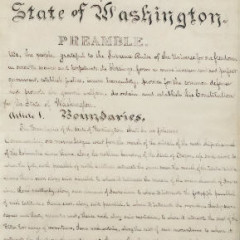 By Tom White
By Tom White
It’s been quite a week in the world of Washington Education policy. We’ve got teacher strikes going on in Pasco and Whidbey Island, with another one looming in Seattle. Meanwhile, the State Supreme just ruled that Charter Schools are unconstitutional, three years after voters approved them, one year after the first one opened, and two weeks after eight new ones opened across the state.
The timing obviously could have been more convenient, at least for the families who are attending those charter schools. On the other hand, the court may have timed it just right, picking Labor Day weekend to send a subtle message to charter school supporters.
I have never worked in a charter school, nor will I. However, about five years ago I was part of a group that spent a week looking very closely at a handful of charter schools in and around The Bronx. I was the only teacher in the group, and as we toured each school, the others marveled at how “high-performing” everything seemed to be. And they were. Kids were working hard, adults were working really hard and test scores were great.
But there was also a sense that things were fraying around the edges. Teachers were working from 7 AM until 5 or 6 PM, and were on-call for homework assistance until 9 or 10 PM. Sick leave consisted of having your colleagues cover your classes. They worked most Saturdays, in addition to a three-week “Boot Camp” in the summer. I asked one teacher if she was planning to have a family while working in her school and she just laughed; “I don’t even have time to take care of a cat!” Worst of all, there was absolutely no job security. It was entirely up to the principal whether you returned next year.
The time and effort that these teachers put in was simply unsustainable. Consequently, the turnover rate was around fifty percent per year. In other words, these charter schools were a union waiting to happen.
But that’s the whole point of charter schools. They’re supposed to be public schools that operate outside the jurisdiction of school districts. Which really means outside the constraints of teacher unions, since most school districts would be more than happy to have their teachers putting in the same time and energy as charter school teachers.
The State Supreme Court ruled that charter schools are unconstitutional because they aren’t “common schools.” They take public funds, yet aren’t run by elected officials. The Court obviously realizes that if they were run by elected officials (the local school board) they would become district schools and subject to the collective bargaining agreement between the district and its corresponding education association.
In other words, charter schools, which essentially operate by exploiting the talent and effort of their teachers, are not constitutional.
I’m not sure what happens next. But if I had a kid in one of those schools, I’d be studying my options.
Pingback: Charter Schools are Unconstitutional | Stories Fro… | EducatorAl's Tweets
My question has always been this: If charter schools operate so much better with more “freedom,” why can’t regular public schools have the same freedoms? (I know, can of worms…but always what I wonder.)